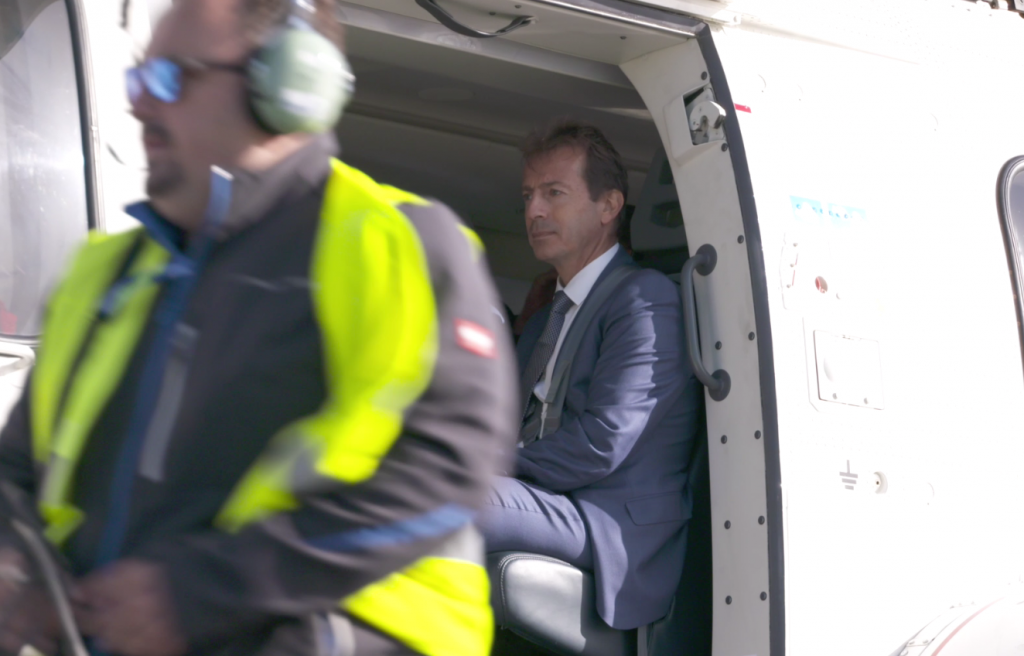
The chief executive of a helicopter firm has been challenged to take a flight “under the same conditions as the offshore workforce”.
Airbus supremo Guillaume Faury has been called on to don a survival suit and get into the back of a controversial aircraft in a like for like journey to an offshore installation.
The call comes after the top executive arrived at a helicopter expo in a H225 aircraft in London earlier this week, as a show of renewed faith in the model.
The aircraft was banned from flying in both the UK and Norway following a fatal crash in April 2016, which killed 13 people including Iain Stuart from Laurencekirk.
The Civil Aviation Authority cleared the choppers to fly again in July this year following an extensive safety overhaul by manufacturer Airbus.
Mr Faury was pictured on Tuesday in the back of a H225 arriving at an airshow in London.
He was wearing a suit during the short flight, in contrast to offshore workers who must wear a full survival suit, a rebreather and a life jacket for hours at a time.
The online petition calling for Mr Faury to experience disgruntled oil and gas workers’ point of view has reached nearly 200 signatures within hours of being set up.
Meanwhile Unite the union has reiterated calls to put chocks to the wheels of plans to return the aircraft to service as the root cause of the Norway accident remains unknown.
The petition states: “We the undersigned challenge Mr Faury CEO of Airbus to undertake a flight under the same conditions as the offshore workforce, full survival suit and flight jacket to be work.”
The online petition was set up by a group of whistle-blowers known as ‘The Furies’.
Organiser James Furies, an alias, said: “It would be nice if Mr Faury could experience what the workforce experience every time they get on board a Super Puma and put himself in the customers shoes rather than treating the workforce like another bit of disposable cargo.”
The H225LP and sister model AS332 L2 helicopters, known as Super Pumas, were both banned from flying after the Norway accident.
During investigations into the tragedy, fatigue and surface degradation was discovered in the main gearbox.
It is thought the rupture of a second stage gear “likely” caused the Norway accident but the root cause of the failure is still not fully understood.
In July, the Civil Aviation Authority announced plans to lift the ban and a directive stated that “in-house” upgrades must be conducted if the affected Super Pumas are to return to service in the UK.
The European Aviation Safety Agency had previously lifted its ban in October 2016 but authorities in the UK and Norway had kept them grounded.
Unite regional officer, Tommy Campbell said a return to service before a definitive accident cause is identified risks further votes of no confidence in the airframes.
He said; “Without all the details being fully known in the Norwegian tragedy Unite believes the decision by Airbus to reintroduce the Super Pumas is not only premature but it potentially jeopardises confidence in the offshore helicopter health and safety system.”
“Until a full investigation is complete and the results are fully known the helicopters should not be brought back into usage by commercial operators.
“Our overriding priority must be the safety of all those working in the North Sea and until we have clarity Unite will not support the reintroduction of the Super Puma H225LP and AS332 L2 helicopters.”
Airbus has been contacted for comment.
Recommended for you
